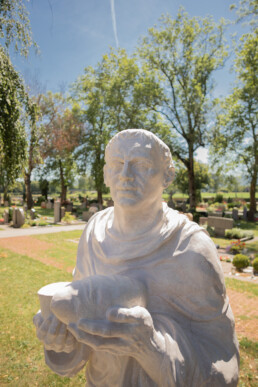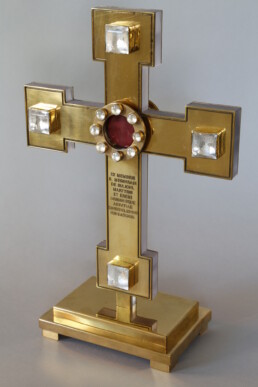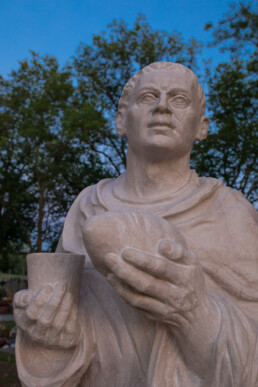Meinrad was born shortly before 800 in Sülchgau near Rottenburg. His parents sent him to the then famous monastery school on the island of Reichenau for education, where he later became a priest and monk. Abbot Erlebald sent the exemplary monk as a teacher to a small monastery on Lake Zurich. But Meinrad felt a great longing for a life of solitude. He moved as a hermit to the southern shore of the lake and around 835 finally to the “Dark Forest”, where he lived for 26 years. Meinrad cultivated an intense life of prayer, was hospitable and gave gifts to the poor who visited him. On 21 January 861, two robbers visited the hermit. Meinrad hospitably entertained them both, but he was slain by them out of greed. Meinrad’s body was taken to the Reichenau and buried there. His relics returned to Einsiedeln for the consecration of the second monastery church in 1039.
In May 2019, Bishop Dr Gebhard Fürst opened a new bicycle pilgrimage route in Rottenburg called the “Meinradweg”. It begins at the Sülchenkirche, the baptismal church of St Meinrad, leads via the Archabbey of Beuron to the World Heritage Site of Reichenau Island and from there via the Benedictine Monastery of Fischingen to the largest place of pilgrimage in Switzerland, the Monastery of Einsiedeln. The approximately 275 kilometres of the Meinrad Trail can be mastered in four daily stages. St. Meinrad is considered the “martyr of hospitality”. So the Meinradweg with its monasteries and cycle path churches invites you to experience hospitality. More information is available at meinradweg.com.
At the opening ceremony of the Meinradweg, Bishop Dr Gebhard Fürst also unveiled a statue of the saint at the Sülchenkirche. The statue was sculpted by Ralf Ehmann from Untersberg marble from the Salzburg area. For some years now, there has also been a relic of St Meinrad in the Sülchenkirche, which was given by the Einsiedeln monastery.


